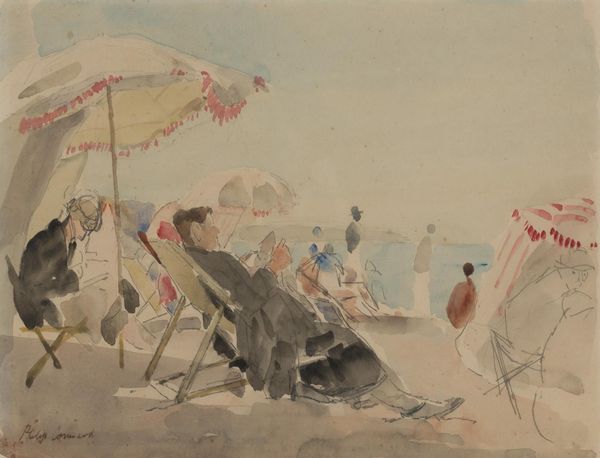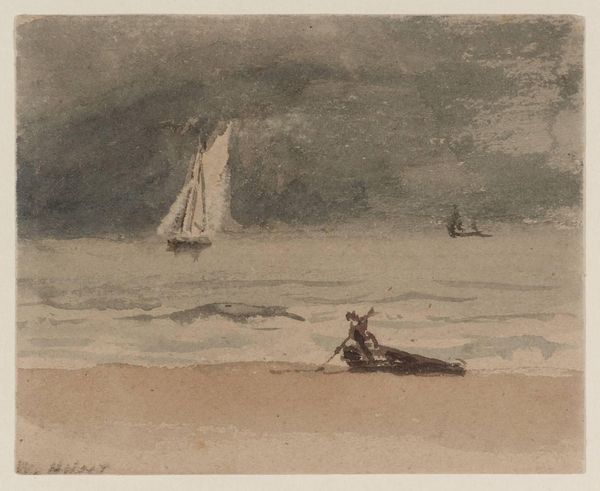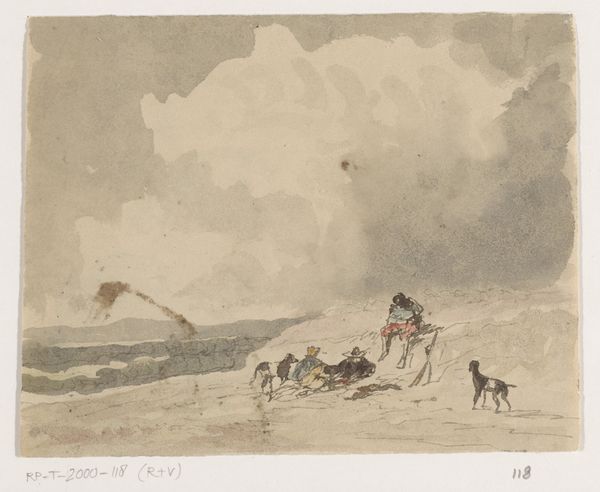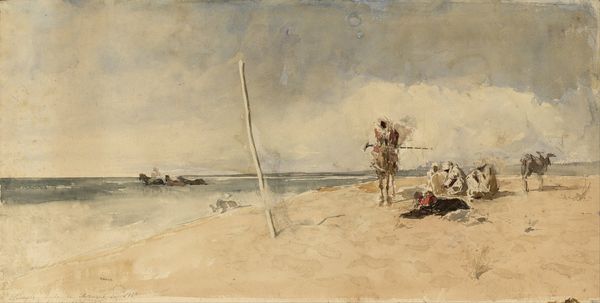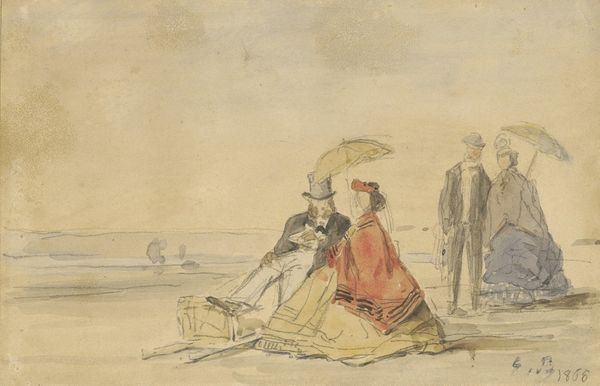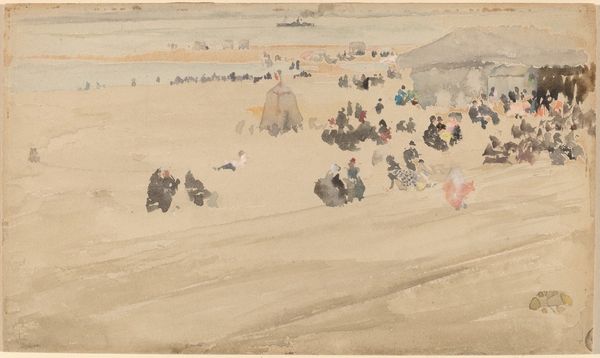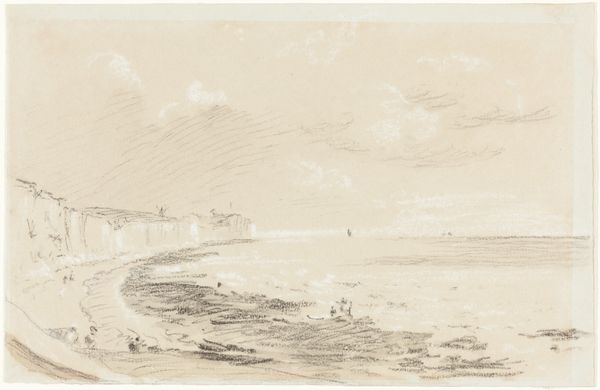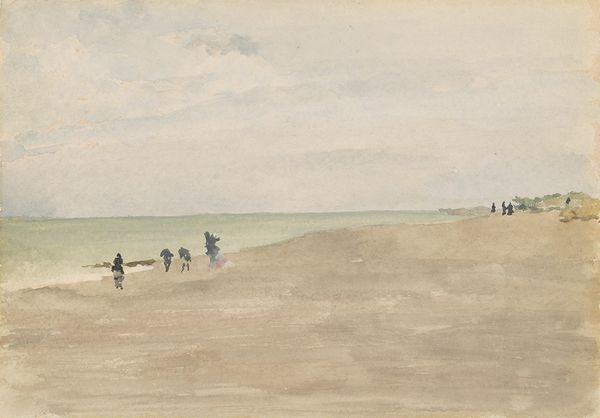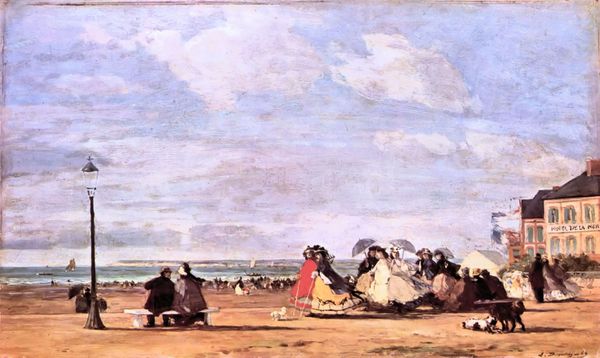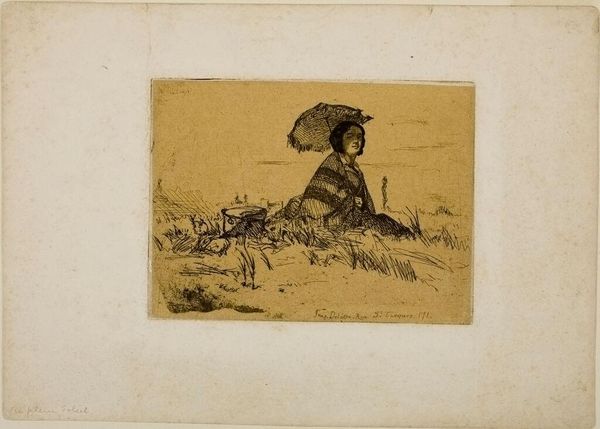
drawing, plein-air, watercolor
#
drawing
#
water colours
#
impressionism
#
plein-air
#
landscape
#
figuration
#
watercolor
#
genre-painting
#
watercolor
Copyright: Public Domain: Artvee
Editor: This is Eugène Boudin's "Sun-Shades, Trouville," created in 1869, using watercolor on paper. There’s a delicate, ephemeral quality to it, almost like a faded photograph. What stands out to you about this work? Curator: Immediately, I see the emphasis on *how* this scene was made. Boudin’s rapid, almost stenographic brushstrokes using watercolors, that privilege of *plein air* work are key here. The very mobility and accessibility of watercolor as a medium is critical for his rapid, light capture of the leisure classes along the Normandy coast, turning labor and observation into leisure itself. Editor: So, the *process* and *materials* tell a story about the changing social landscape? Curator: Absolutely. Watercolors weren't just about mimicking reality; they were about *engaging* with it in new ways. Consider the social stratification; are these figures consumers or are they being consumed by Boudin for the commercialization of leisure? How does the materiality of watercolor contribute to its popularity with both amateur and professional artists alike at this time, making "high" art techniques more accessible for some? Editor: That's fascinating. I hadn't considered the role of the materials themselves in reflecting social dynamics. What about the umbrellas? Were parasols so important? Curator: The umbrellas serve as potent visual markers. The commodification of protection from the elements, a sort of literal "sun-shade", highlights the social performance underway, which emphasizes bourgeois decorum and distancing from manual labor in the sun, using both labor and tools to define class. They transform work, even in its depiction. Editor: This really gives me a different way of seeing this watercolor. I was so focused on the aesthetic quality of the brushstrokes; it makes you realize it represents so much more. Curator: Exactly. It is that dance between intention and observation, but most of all, the production that defines its art historical relevance.
Comments
No comments
Be the first to comment and join the conversation on the ultimate creative platform.
